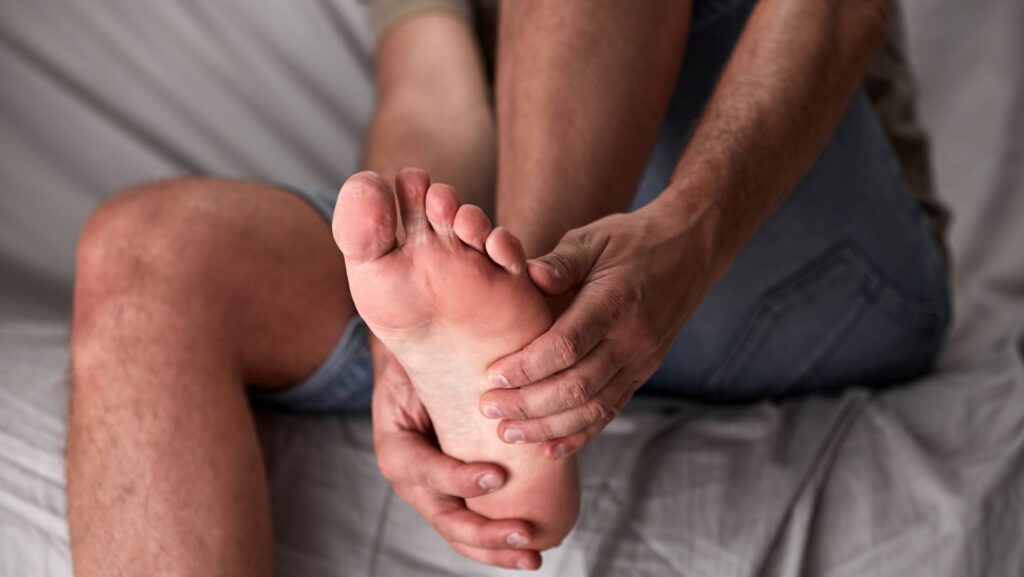Foot health is often overlooked, but our feet are the foundation of our mobility. Rare foot issues can significantly impact your daily life and overall well-being. Understanding these issues and recognizing the symptoms early can help you prevent complications and maintain your quality of life. This blog post will explore some uncommon foot problems, their signs, prevention tips, and treatment options.
Understanding Rare Foot Issues
Common Types of Rare Foot Issues
While many people are familiar with bunions and plantar fasciitis, rare foot issues like Charcot foot, tarsal coalition, and Freiberg’s disease are less known but equally important. Bunions can be easily treated at places like The Bunion Cure. Other foot issues sometimes aren’t as clear-cut. Charcot foot, often associated with diabetes, leads to weakened bones in the foot, causing deformities. Tarsal coalition is a congenital condition where two or more bones in the foot fuse, restricting movement. Freiberg’s disease affects the metatarsal bones, leading to arthritis and pain.
Causes and Risk Factors
The causes of rare foot issues vary from genetic predispositions and congenital deformities to chronic conditions like diabetes. For example, Charcot foot primarily affects those with neuropathy, while tarsal coalition is usually hereditary. Understanding your risk factors is crucial for early detection and management.
How Rare Foot Issues Differ from Common Foot Problems
Unlike common foot issues such as athlete’s foot, rare foot problems often have more complex causes and require specialized treatment. Common foot problems generally result from lifestyle factors like poor footwear choices or overuse, while rare foot issues might involve genetic, neurological, or developmental factors.
Signs and Symptoms of Rare Foot Issues
Overview of Signs to Watch Out For
Recognizing the signs of rare foot issues early can make a big difference in treatment outcomes.

Symptoms can range from mild discomfort to severe pain and deformity, affecting your ability to walk and perform daily activities.
Detailed Descriptions of Each Symptom and Its Significance
For instance, Charcot foot may present with redness, swelling, and warmth in the foot, often mistaken for infection. Tarsal coalition might cause flat feet, stiffness, and pain during physical activities. Freiberg’s disease typically manifests as pain and swelling in the ball of the foot, sometimes accompanied by limited motion in the affected toe.
When to Seek Professional Help
If you experience persistent foot pain, swelling, or any deformities, it’s essential to seek medical advice. Early diagnosis can prevent further complications and help manage the condition effectively. Ignoring these symptoms may lead to chronic pain and even permanent disability.
Prevention and Management
Tips for Preventing Rare Foot Issues
Preventing rare foot issues involves maintaining good foot hygiene, choosing appropriate footwear, and managing underlying health conditions. Regular foot inspections help catch early signs of trouble, especially if you have conditions like diabetes that increase your risk.
Recommended Lifestyle Changes and Footwear Considerations
Wearing supportive footwear with proper arch support can prevent many foot problems. Avoid high heels and tight shoes that can exacerbate conditions like bunions.

Incorporate foot-strengthening exercises into your routine to enhance stability and reduce the risk of injuries.
Available Treatment Options and Their Effectiveness
Treatment options vary depending on the specific condition. Charcot foot may require immobilization and custom orthotics, while surgery might be necessary in severe cases. Tarsal coalition treatment ranges from physical therapy and anti-inflammatory medications to surgical intervention. For Freiberg’s disease, conservative treatments like rest, ice, and orthotics are often effective, but surgery may be needed for advanced cases.
Final Thoughts
Foot health is crucial for overall well-being and mobility. Recognizing and addressing rare foot issues early can prevent severe complications and improve your quality of life. Always prioritize foot health by wearing appropriate footwear, monitoring for unusual symptoms, and seeking medical advice when needed.
If you’re experiencing any persistent foot issues or have concerns about your foot health, don’t hesitate to consult a healthcare professional. Taking proactive steps today can help ensure a healthier, more active tomorrow.
